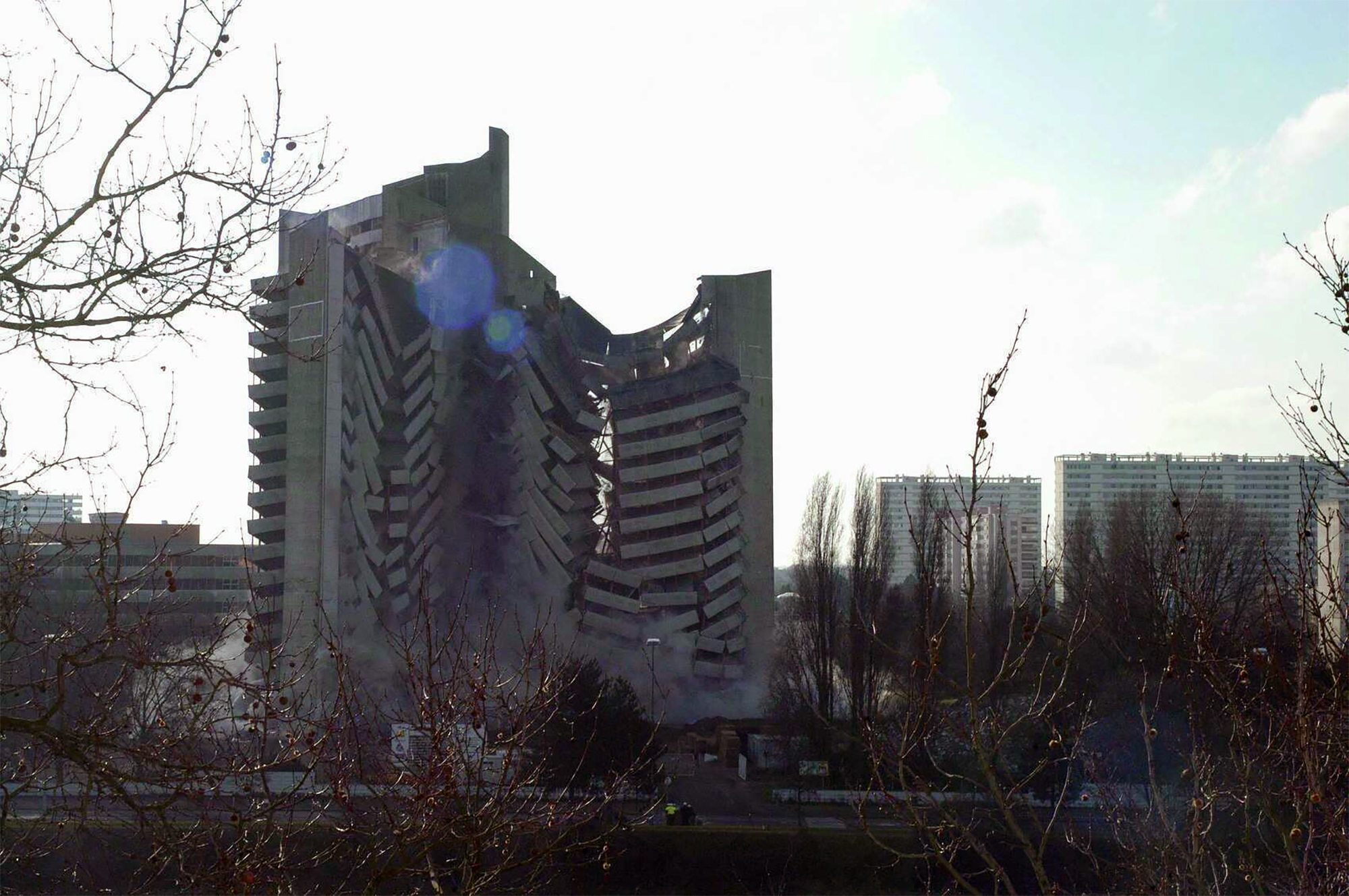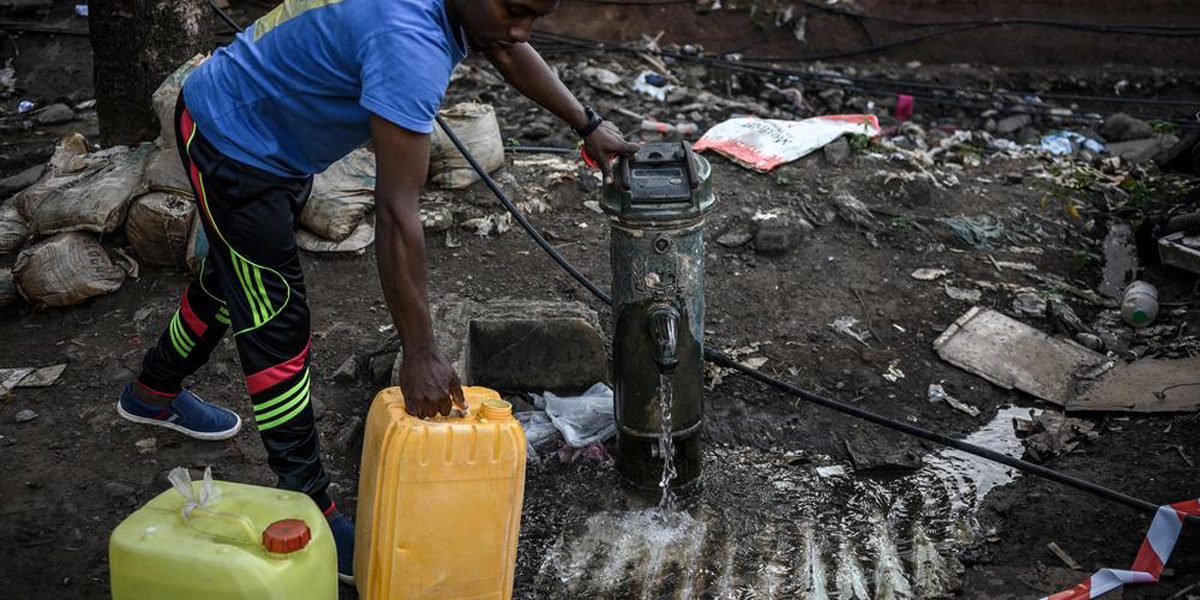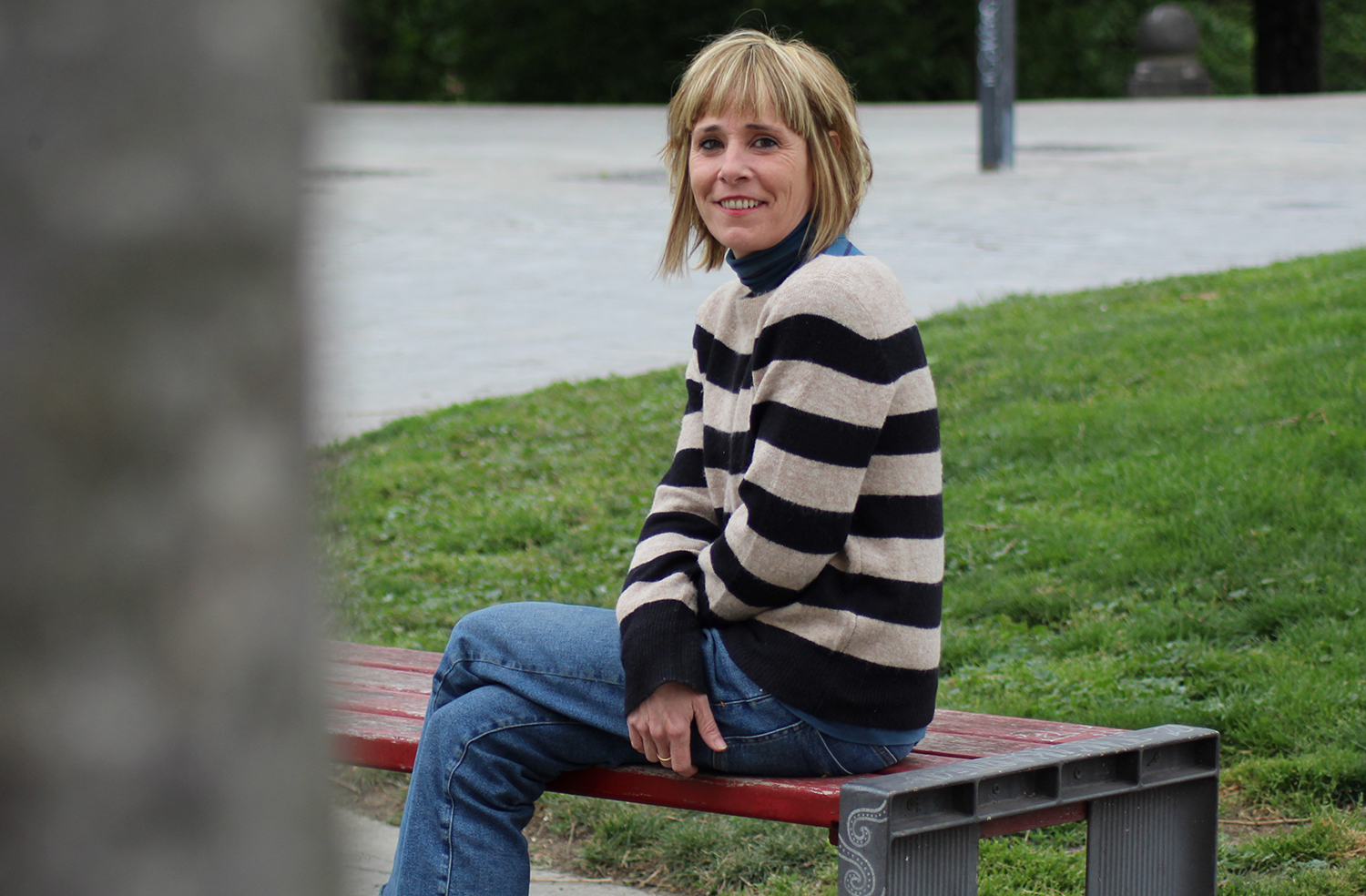What is that white powder? The fourth wave of asbestos comes…
- According to the EU institutions, in June they amended the asbestos directive and reduced the maximum level of exposure to carcinogenic mineral. To this end, the fight carried out by the staff of the French administration in the Tripode building in Nantes has been fundamental. But according to Brussels estimates, millions of obsolete homes in Europe expect white dust. Will they be enough to cope with the new wave that comes to us?

After a dry explosion of five, four, three, two, one..., the eighteen-storey building decreases like the toy towers made with domino chips. We are on 27 February 2005 on the island of Nantes, near the beautiful Loire River, and thousands of people have gathered in the surroundings who have just fallen before their eyes a great symbol of the fight against asbestos.
Tripode's name, being a three-edged star, was built in 1972 to house the offices of the Ministry of Foreign Affairs, the Institute of Statistics and Finance of the French Government. By then the risk of asbestos was known, but the architect used asbestos, another way to call asbestos, as fire insulation on all roofs of the building. Total 350 tonnes.
In the following years, lung cancers increased among workers and began a complicated crossroads to be recognized as occupational diseases. This experience was decisive recently, at the end of June, for the European Parliament and the Council of Europe to agree more stringent measures against asbestos.
According to the latest epidemiological studies, 31 people have died from inhalation of asbestos in Tripode, but trade unions say they are much more
“Get out of there!”
For twenty years, almost 1,800 people worked in Tripode, many of whom were women who had served as managers, with negative suspicions about the white powder that soiled their tables daily. In the 1980s, unions began to request information on asbestos installed in the building: “We heard that asbestos samples were taken and we wanted to know the results,” explains Francis Judas to HesaMag magazine. Published by the European Trade Union Institute (Etui), an important report on asbestos was published in this spring's issue, which covers the case of Triando in detail.
Judas, delegate of the Interunion Association on Asbestos in Nantes, experienced this process from within: “We were told there was no danger, that the amount of asbestos was within safe standards,” he says. But with this innocent answer, they began to wonder elsewhere. From the Parisian university of Jusseiu, which had the same problem with asbestos, they were warned that they were in danger. However, the clearest message came from the International Agency for Research on Cancer: “Out there!”
Since 1989, mobilizations have accelerated: “Our strategy was to ignite alarms so that the media that were concerned about the asbestos problem and, above all, the situation of the workers of the port shipyards could serve us.” Yes! Faced with the asbestos of evacuating 3,000 officials from the famous Berlaymont building in Brussels, which was then remodelled and now the seat of the European Commission, it broke the effort of the workers in Tripode and ended up leaving the facilities by government administrations in 1993.
.jpg)
The first death occurred in 1995, a 40-year-old electrician who worked for ten years in maintaining Tripode. Lung cancer. In 1999, the second death occurred, a man of 43 years old. Also lung cancer. According to the latest epidemiological study, at least 31 people have already died from inhalation of asbestos in Tripode, but trade unions say they are much more.
Eighteen years have passed since the collapse of Tripode in 2005 and the use of asbestos in the European Union was totally banned. Unfortunately, it is still a topical issue, because asbestos is still present in many invisible buildings and lungs.
What are 10,000 asbestos fibres?
On 28 September last year the European Commission launched a proposal to amend the asbestos directive and to limit the maximum permitted exposure to 0.01 per cubic centimetre. In other words, there are no more than 10,000 asbestos fibres in plants in a cubic metre.
But Tripod's epidemiological study reveals that deaths with cancer worked between 3,000 fibers per cubic meter. Francis Judas speaks unapologetically in HesaMag magazine: “With the limit proposed by the European Commission there is a risk of repeating the catastrophic experience of Tripode at European level. (…) With the limit of ten thousand fibres per cubic meter, we are condemning thousands of workers to death by asbestos.”
Tony Musu, a researcher at the Etui institute, has given concrete data in the same journal. In drawing up the proposal for 10,000 fibres, the European Commission has based itself on the estimates of the European Chemicals Agency. According to this, only 12 out of every 100,000 workers exposed to asbestos would die ill within this limit. But Musuke believes that the estimates of this agency are not reliable and that, seeing the case of Nantes, it would actually kill 1,727 people, a hundred times more. They say that lobbies in the sector are pushing to leave the barrier so high, according to Les amiantés du Tripode.
We will soon see the fourth wave affecting citizens who have had no employment relationship with asbestos: “The number of deaths will increase over the next two decades”
Following complaints from the trade unions and the victims of asbestos, a report prepared by the MEP Véronique Trillet-Lenoir, with 84% of the votes, was adopted in the Strasbourg Chamber last April. The report has taken account of the epidemiological study carried out in Tripode and, among other measures, considers that a much stricter, ten-fold lower limit should be set: only 1,000 fibres per cubic metre. They have now reached agreement with the Council of Europe and are in the process of approving the change.
In a house 1.6 kilos of asbestos
But the European institutions have made a much more worrying recognition: there is no safe level of exposure to asbestos. And given the existing building rehabilitation projects in the European Union (EU), they seem to have become even more nervous.
The Renovation Wave plan aims to make more energy efficient millions of buildings in Europe by 2050 to achieve a very dense “climate neutrality”. It is estimated that in Europe there are 220 million buildings prior to the ban on the use of asbestos in 2005, so there is a great possibility of encountering the carcinogenic mineral when the movement of many ellos.Un study published in 2023 commissioned by the European Commission has made this calculation
by regions: In Álava there is an average of 1.16 kilograms of asbestos per household, 1.6 kilograms in Iparralde… But there are some that are much worse, in some places in Latvia they have measured 5.61 kilograms per household.
.jpg)
This will significantly affect construction workers. According to the European Commission, 7 million people could be exposed to asbestos and, according to the same source, this figure will grow by 4% per year by 2031. Another data, provided by Eurostat, is that 78% of occupational cancers are due to asbestos and 90,000 people died in Europe in 2019. Obviously, in other continents that do not have the possibility of doing these statistics there will be much more.
Four waves and death of a tsunami
So, no one doubts that there is a new wave of asbestosis and mesothelioma cases caused by asbestos, which is overlapping the previous ones. Tony Musuke explains in HesaMage that asbestos has produced four waves in the mundo.La first wave was among the miners who extracted mineral; the second, among the workers who used or installed asbestos for the industry (electricians, mechanics, joiners…); the third wave has started to suffer the repairers of the constructions and those who have carried out the work of asbestos removal; and the last,
.jpg)
“Analyzing the asbestos cancers we are seeing today, we can say that they are probably from the third wave, combined with the end of the first wave and the decline of the second,” says Musu. And he announced that we will soon start to see the fourth wave, because citizens who have had no employment relationship with asbestos will be detected mesotheliomas. Thus, “over the next two decades the number of deaths will continue to grow.”
We imagine their health costs and their drama, but also the economic costs of occupational cancers in Europe: Between €230,000 and €610,000 million, representing 1.8% and 4.5% of EU Gross Domestic Product respectively. Perhaps money is better understood by the decision of the European institutions.















